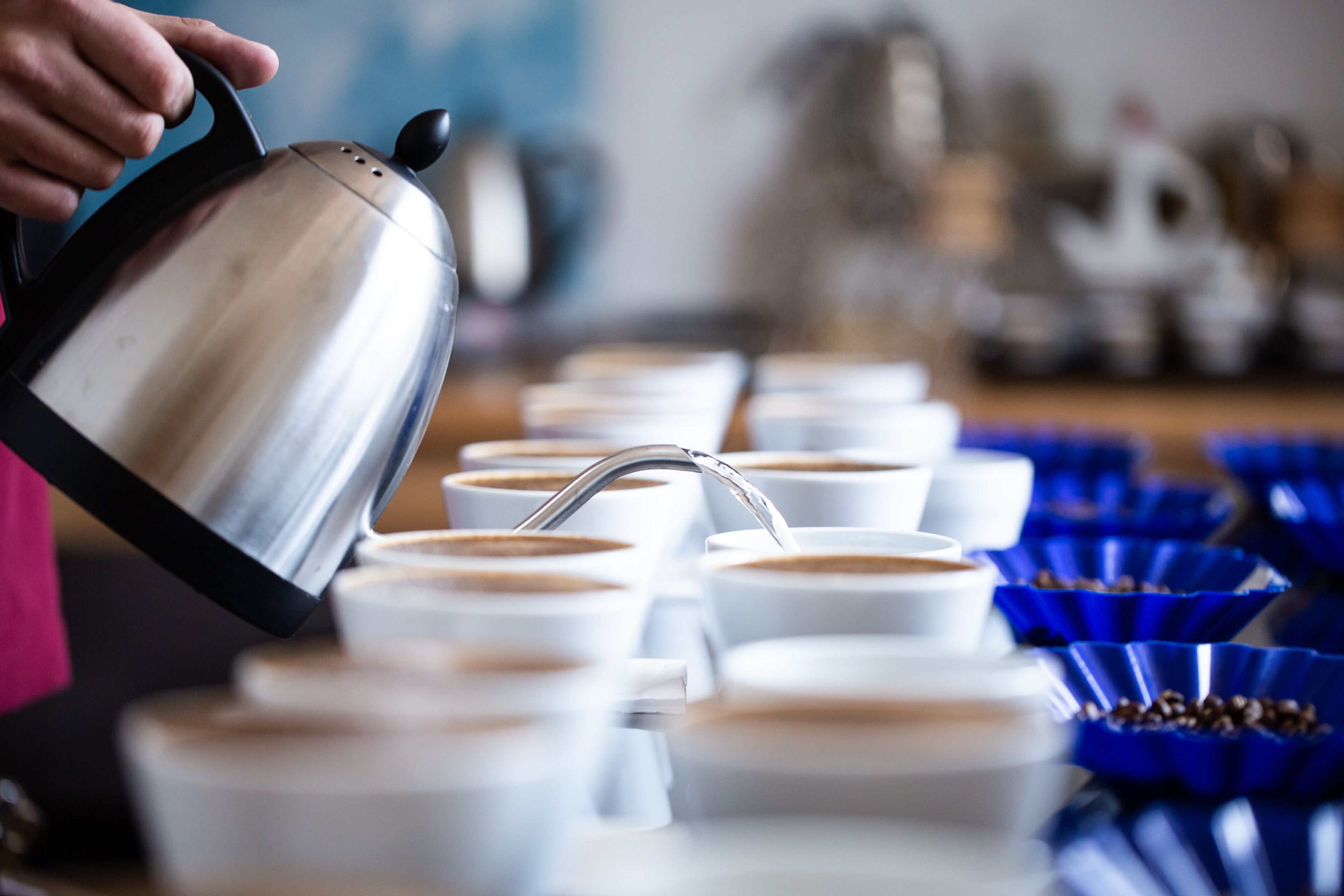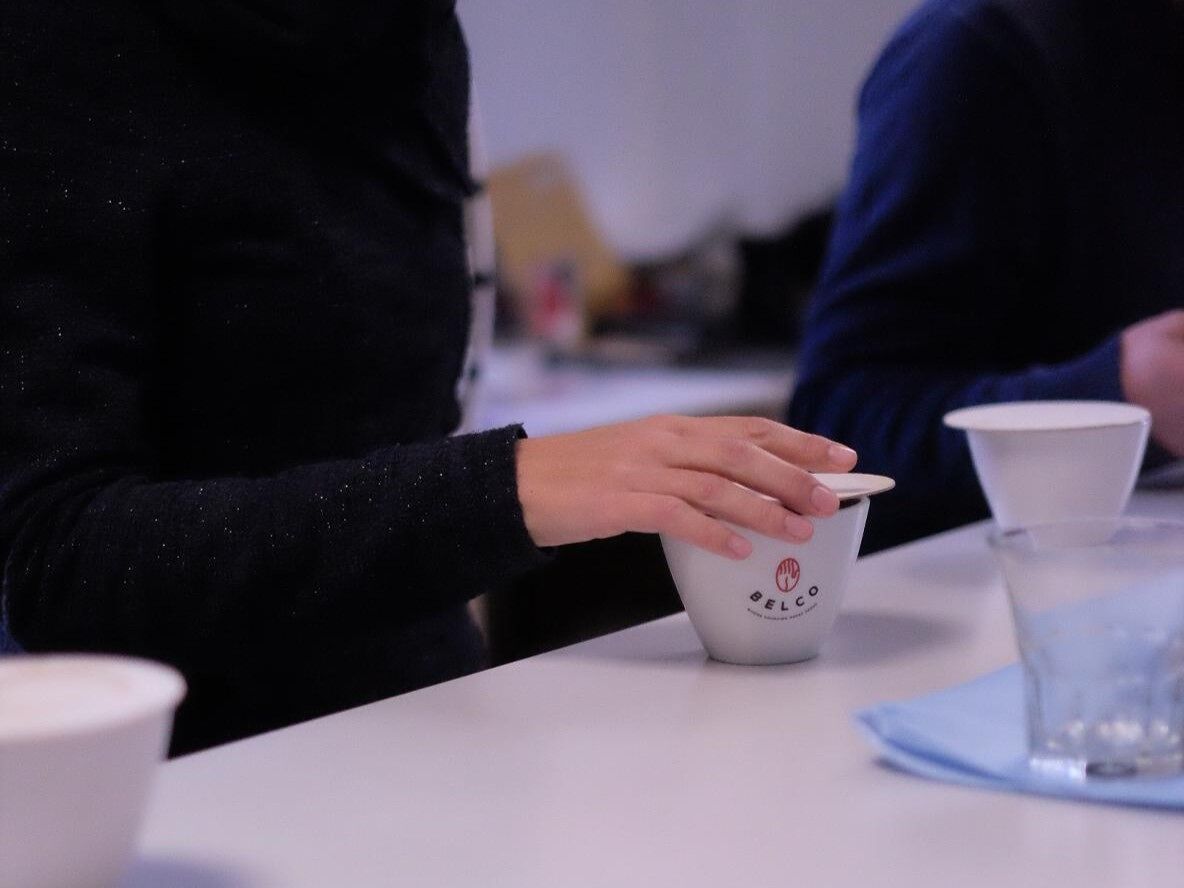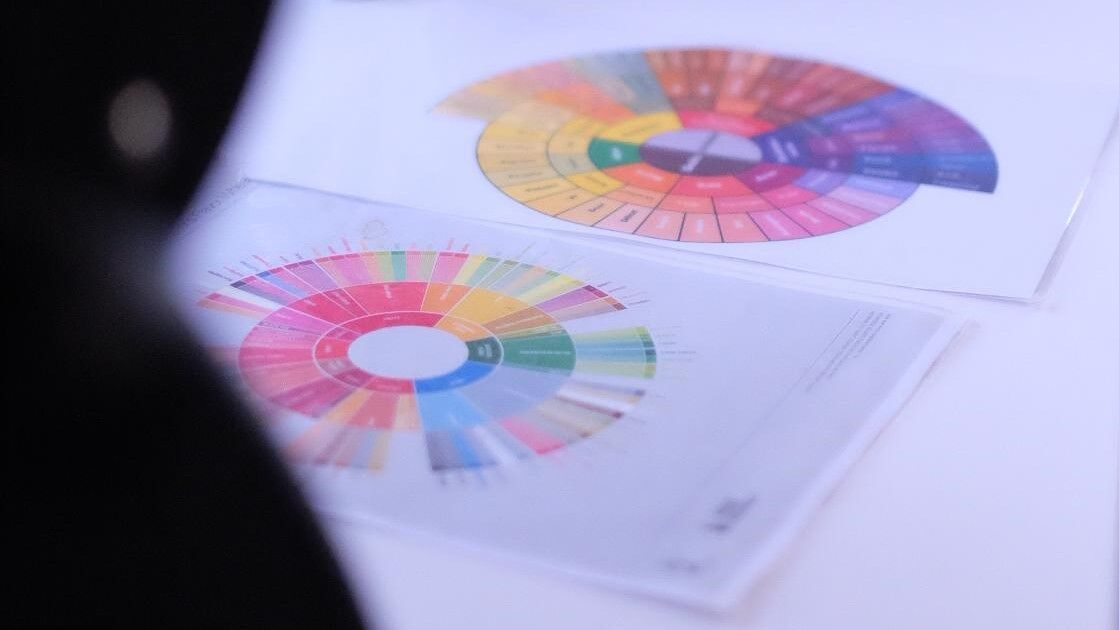
How to taste a coffee ? From zero to aromatic notes
To taste is to enter into the intimacy of coffee. This phrase sounds like a call to discover all the diversity and complexity that coffee has to offer, and I've taken a lot of inspiration from it to talk to you about coffee tasting*.
Meeting a coffee means accepting its strengths and weaknesses. To do this, tasting requires you to activate three senses that we all know well: smell, taste and touch. Today, I'd like to talk to you about coffee tasting, in the hope that it will inspire you to taste every coffee with the same passion!
Why is tasting coffee so important?
Tasting is such an important part of the coffee business because it is our common language. It allows us to understand a coffee and the work of everyone in the entire value chain, from producer to end customer.
Tasting adds value to coffee, in the same way as traceability and sustainability. Alongside the stock market price or production costs, it helps to establish a price, by differentiating between a standard coffee and an exceptional one.

Tasting begins even before the coffee is ready. As soon as the grind is ready, you can smell it and get to know your coffee.
How to taste a cup of coffee?
It's a huge question, and we're going to try to provide some answers to help you get started and progress. First of all, I invite you to taste without complexes, with passion, patience and simplicity.
The purpose of tasting is to transform an impression into a description. The most difficult part? Getting past your sensations and emotions, and remain in the position of the observer.
Along with your sensory memory, a piece of paper and a pen are the essential tools for starting to taste coffee. Tasting is an exercise in taking a step back from a cup of coffee, and taking the time to write it down is a good way of slowing down your thoughts, as well as making it easier to remember the coffee you've tasted.
Call on what you know already
At first, it's normal for you to be at a loss for words. Over time, you'll build up a repertoire of flavours and sensations, and the exercise will seem more natural. Start with the "I like it, I don't like it" prism. Is the coffee pleasant? Or maybe you just don't like what's staying in your mouth? Once you've answered this question, ask yourself why and go on to analyse it further.
Consciously tasting coffee calls on what you've already learned, and gives rise to emotions, both positive and negative. Accept each of them as information about the coffee, without reducing it to any one of them. A cup of coffee is complex, and the best way to define its strengths and weaknesses is to break it down, bypassing your emotions.
Deconstructing the cup
Here, I invite you to use one of the many analysis grids that exist today as a reference. It could be that of the SCA (Specialty Coffee Association), that of the Cup of Excellence, or that of Barista Hustle. It's up to you to decide which one you find most interesting!
The idea is to have a way of breaking down your cup and describing its different attributes**, one by one:
- Flavour (Acidity, Bitterness, Sweetness)
- Body (Viscosity and texture)
- Length in the mouth
- Balance
For each attribute, focus on its quality, intensity, clarity, and complexity. Finally, think about the overall balance of the coffee you've just tasted: does one attribute dominate more than another? What is the overall character of this coffee?
Don't hesitate to taste the coffee at different temperatures. As it cools, ask yourself about its aromatic development and its clarity. Tasting is also a journey through the time of the cup and its evolution.
What about the aromatic notes?
Aromatic notes are often the focus of attention during tasting. They reflect the pleasure of drinking or not drinking a coffee, and change as the temperature of the coffee decreases.
To avoid getting lost, the idea is to work in a tree structure, from the simplest to the most precise.
Is your coffee more floral, fruity, chocolatey, herbal, spicy, etc.?
Then open the drawer of the chosen aromatic family and specify. If you think your coffee is floral, is it jasmine? And if it's fruity, is it berry, citrus or other fruit? Then try to name a specific aroma, such as strawberry or peach.
To help you, you can refer to the Flavour Wheel, developed by the SCA in partnership with the University of UC Davis, in California. It is one of the most comprehensive tools to date for formalising and describing a flavour profile.

The flavour wheel, a comprehensive tool for refining the expression of your tasting experience.
How can you improve?
Contrary to popular belief, tasting is not a talent. Tasting better is a long process, for which regularity and concentration are the key words.
However, there are a few tricks you can apply from the outset to make progress:
- Taste in a quiet place, to encourage concentration
- Adopt the posture of observer, not judge
- Always taste in the same way, with the same gestures
- Put your tasting into perspective, and compare several coffees at the same time - up to 3 if you're just starting out.
- Compare your tasting with that of other professionals
- Adopt the “morning cupping” approach, as we do at Belco. As well as giving you the chance to taste new coffees, it's a great way of sharing!
To sum up
Tasting coffee is complex, and the only way to progress is to get started! The path will become clearer as you taste, and you'll enjoy it more and more. And above all, don't forget! Tasting should be a pleasure, as well as being the common language of all coffee professionals.
* Inspired by a quotation in Emile Peynaud, Jacques Blouin, "Le Goût du Vin", Dunod.
** Certain acids (malic or lactic) and sweetness are more likely to be perceived than actually present in the cup. To find out more, here are two articles published on the Barista Hustle website, one on acidity and the other on sweetness.
Did you like this article? Share it with your community:
